Introduction
This is a review of Logos 10. (The package I used for this review is Logos 10 Academic Professional.) As a Bible curriculum editor, adult Sunday school teacher, church member, recent DMin graduate, and soon-to-be Ph.D. applicant (hopefully), I’m using Logos constantly—usually every day of the week and in a variety of use cases at work, home, and church.
Sunday morning, Logos is open on my iPad as I follow our pastor through his sermon text. Or, if I’m filling a pulpit, I’ve used Logos for much of my exegetical work, reading and highlighting many technical commentaries.
Monday through Friday, I’m using Logos to edit and write Bible lessons—fact-checking, researching, citing sources, and more.
Saturday morning, I’m prepping my Sunday school lesson by browsing Bible dictionaries and non-technical commentaries.
In this review, I’ll share three of my favorite features, three of my favorite resources, and more about how Logos Bible software helps me. And please ask any questions you have by commenting, and I will do my best to answer!
You can also check out my November 2020 review of Logos 9 here. And if you are interested in purchasing Logos, you can use this affiliate link for an exclusive discount. (And, of course, using my affiliate link helps me.) With this link, you can get . . .
- 15% off L10 for new Logos customers and 30% off for upgraders (own any previous version of a Logos base package). Subsequent upgrades are 15% off. There is no discount on standalone Feature Upgrades
- Affiliate exclusive offer also gives you 5 free resources (from a pre-selected list of 30) with a customer’s Logos 10 base package purchase (first L10 purchase only)
My Favorite Features
Feature #1: The Passage Guide
The feature I use the most, without a doubt, is the passage guide. It’s simple and fast. Enter any Bible reference, and Logos compiles a list of links to that passage in all your relevant commentaries. You also get a list of parallel passages, links to Logos-generated word studies, patristic citations, references to applicable sections of theology books, and more. You can enter your passage right into the main search box, click “Open Passage Study Layout,” and there you go.
If I enter Romans 5:8 (“but God shows his love for us in that while we were still sinners, Christ died for us.) and hit return, I get instant access to well over a dozen Bible commentaries. Logos also gives me four parallel passages in which Paul discusses “Reconciliation with God,” a suggestion to check an Old Testament parallel in Psalm 31, a list of topically related verses in Scripture, and links to word studies on key words from Romans 5:8. Clicking on one of these words takes us to my second highlighted feature.
Feature #2: Bible Word Study Guide
That word ὑπέρ (“for)” makes me curious. What does it mean that “Christ died for us”?
Click the little speaker icon to hear someone say the word if you want to check your pronunciation. More importantly, Logos provides a breakdown of what all my lexicons say about this word. I can click on each one to expand.
Then there are these nice-looking charts showing how an English Bible translation and the Septuagint handle this lexeme. Perhaps the most important feature is a categorized textual search, down at the bottom, that allows me to search specifically within a set corpus such as LXX, NT, Apostolic Fathers, Pseudepigrapha, Josephus, and more. Just with a single click!
Favorite #3: Search
This is probably the most basic, yet central feature of Logos—the good old-fashioned search feature. What’s the point of having a bunch of amazing data if we can’t search it? The search feature helps us sort through a mountain of resources so we can find what we need.
Say I remember reading a book review of Simon Gathercole’s Defending Substitution: An Essay on Atonement in Paul, but I can’t remember where. One simple search and a click, and there I have it in the December 2015 issue of Themelios.
Another new feature that improves searching is you now have the option to mark which books you own in your print library. This can help you keep track of your entire library—digital and physical. According to Faithlife . . .
Users can add their print books (or ebooks, or library books) into their Logos library and search inside those books. When searching, they’ll see a snippet from the book, and the location of the search result (usually a page number or reference). Users can then easily find the result in their print book.
Users can add books to their Print Library Catalog by scanning the ISBN or searching for the book within Logos.
In addition to searching your resources, you can also run all kinds of morphological, syntactical, and word searches in the text of Scripture. This is part of what makes Logos so powerful and helpful. Logos provides simple-to-use search templates for a “plug and play” experience. Faithlife explains,
Users no longer need to remember angle brackets and curly braces, but use a simple keyword:value syntax familiar from Google and other search engines. For example, <Person Moses> WITHIN {Speaker <Person Jesus>} becomes person:Moses IN speaker:Jesus, to find all the times Jesus talks about Moses (a 37% reduction in query length).
An improved autocomplete will intelligently suggest terms, which means users don’t need to remember most of even the simplified syntax.
“Search All’’ results pages intelligently surface results in the most relevant datasets, without the user needing to know the dataset exists, nor the special syntax that dataset requires.
New search tabs make it easier to search maps, Factbook, Documents and other tools.
You can also run more advanced original language searches using a variety of search helps and intuitive tools.
Bonus Favorite: Shortcuts
Your favorites now appear in the sidebar on the left of the screen. You can drag and drop those resources you use the most into the bar, rename, and rearrange them at will. This is where I keep essentials like Moulton and Milligan, BrillDAG, the Lexham Bible Dictionary, and Michael and Rachel Aubrey’s Greek Prepositions in the New Testament for ready access.
Logos has so many excellent features. You can customize your layouts, turn page numbers off and on, generate citations, and adjust the font size of your resources (something I’m doing more and more these days). Now let’s look at some of the resources available on Logos.
Any Problems?
I wanted to play around with the Translate feature a little. When I tried to translate some of the German text in the front matter of NA28, I got an error saying: “Sorry, translation isn’t available in Greek.”. But the Translate feature worked great when I used it on some German text in Hermann Von Soden’s Die Schriften des Nuen Testaments, Teil II: Text mit Apparat. So mixed success with this feature, but you can always copy and paste your text into Google Translate. (Note: Faithlife states that this feature is currently in the “spec finalization phase.”)
Criticisms?
I’m still holding out for an improved sympathetic highlighting or “corresponding selection” feature. First, it would be ideal if you could hover over a word in one text and Logos would highlight it in a parallel resource. Currently, you have to drag over text to highlight it. Second, it would be nice if this was a default feature for linked parallel texts. Currently, you have to set this up under your visual filters when you want to use it.
My Favorite Resources
It’s easy to take having access to so many tremendous tools for granted. I’m extremely thankful for all my resources in Logos. In this section, I’ll highlight three resources out of my many, many, many favorites.
At least two of the resources listed below may surprise you—BDAG and NA28. Until getting Logos 10, I had never used either of these on Logos before. These may seem like basic resources to cover, but as fundamentals of exegesis, they’re key considerations when it comes to evaluating the usefulness of Logos.
Favorite #1: BDAG
Sticking with that pint-sized preposition ὑπέρ, does BDAG in Logos pack more punch than in print? Indeed.
Hover over abbreviations to find out what abbreviations like “JosAs,” “ApcEsdr,” and “Ath.” stand for (Joseph and Asenath, Apocalypse of Esdras, and Athenagoras). Note that when I hover over “Just.” and “Tat.,” Logos does not expand their abbreviations, but they stand for Justin and Tatian, respectively. Hovering over Scripture references will show you the text of that passage. But the search function is the most powerful because you can limit or expand your search to . . .
- Extended Definition
- Footnote Text
- Formal Equivalent
- Heading Text
- Large Text
- Lemma Text
- Surface Text
- Translation Equivalent
Logos also provides a short guide to search BDAG specifically called Search BDAG Help that explains what each of these means.
Favorite #2: NA28
I have not one but two printed copies of NA28, but accessing this scholarly standard in Logos has its advantages. Let’s look at Romans 5:8. You can hover over the critical signs to see the variant readings and witnesses, or you can open the apparatus in a separate display. Don’t remember what that little T-shaped sign means? Hover or click on it to see that it marks an addition.
And, of course, you can run all kinds of searches and hover over words for morphology and lexical glosses. If I double-click on a word, a display instantly opens up to the respective entry in BDAG. It’s a great way to read the text.
Favorite #3: Lexham Survey of Theology
This resource is packed full of handy articles to help you review theological topics or propel you further in on your research. The article on “Theories of the Atonement” gives me a definition and explanation, along with a survey of major views. If I scroll down a little, I find some key verses on the subject, links to recommended resources (some of which I own, some of which I do not), and links to related topics within the Lexham Survey of Theology.
Bonus Favorite: Bible Dictionaries
I find myself using Bible dictionaries like the Lexham Bible Dictionary and Anchor Yale Bible Dictionary more and more. Qualified experts have written detailed and informative entries on pretty much every person, place, thing, and topic related to Scripture. Plus, those entries conclude with bibliographies that can point you to other resources for further study. I just finished teaching a Sunday school series on the apostles at church. Bible dictionaries provided some excellent information that I, in turn, passed along to my class. Here is an example of some references on the atonement.
And don’t forget, Logos saves all your highlights, so you can see them on all your devices. I tend to use my iPad more at home. Whatever I highlight there, appears in the same resources on my iMac.
As far as favorite resources go, there are so many other nice surprises such as TDNT, TDOT, Pritchard’s Ancient Near Eastern Texts Relating to the Old Testament, and Jacob Milgrom’s Leviticus: A Book of Ritual and Ethics in the Continental Commentary Series from Fortress Press. Faithlife packs an abundance of quality books into its Bible software packages. I don’t need all these resources at once, but I use many of them at different times for different projects and purposes.
Conclusion
Before wrapping things up, let’s assess the two claims Logos makes to justify this latest version by answering these two questions—does it run fast and does it help users focus on the Word of God?
How Fast Is It?
I ran it on both my 13-inch MacBook Pro with 1.7GHz quad-core 8th generation Intel Core and my iMac with 3.3 GHz 6-Core Intel Core i5. My technical knowledge of computer performance is pretty limited, but I can say that Logos runs great. It does not crash, lag, or seem sluggish. Resources load in a flash.
Does it run faster than Logos 9? The only empirical evidence I can relay is a comparison of running a Factbook search through the primary search bar. Whenever I tried to do this in Logos 9, it would try and try to search without success. With Logos 10, I get almost instant results. The “Search All” feature is lightning quick.
Here are some specs from Faithlife:
- Native support for Apple Silicon gives a good performance increase across the board (~10% – 40%?) for everyone with an M1 processor
- .NET 6 support gives everyone using Windows a good performance increase across the board, which varies according to the feature (~10% – 40%?).
- Faster indexing (~15%) for everyone on desktop, and about 10% less disk space for the index.
- Improved server performance improves the speed of most online functions, which is especially beneficial to the mobile and web apps.
*Speed improvements are estimated. Benchmarks are forthcoming.
Does It Help Me Focus on the Word?
The big difference here is that the toolbar moved from the top of the screen to the side. Here is a screenshot of Logos 10 to compare with a screenshot from my review of Logos 9 (available here). Note that the Logos 9 screenshot was taken on a 13-inch laptop and the Logos 10 screenshot was taken on a 27″ display.
Screenshot of Logos 10
Screenshot of Logos 9
The new arrangement is not a huge difference in my opinion, but Logos has a great design and it’s intuitive. Those qualities count in my book. The less time I can spend figuring out how to use the software, the more time I can spend studying. So, in that respect, Logos does help me focus on studying the Word of God. And, as a tool, Logos excels at this task. It provides rapid access and search capability to a digital library. So long as that digital library is stocked with worthy publications, you’re equipped for success in your Bible study endeavors.
Wrapping Up
Now that I’ve covered some of what I like about Logos 10, I’ll conclude with some final thoughts on how Logos 10 helps me.
I downloaded Logos 6 almost seven years ago, mostly using mostly free resources and only making an occasional purchase. Since then, I’ve gradually invested more and more, and now I consider it an essential part of my library. A student or scholar equipped with the proper print resources does not need Logos, but it offers unparalleled efficiency and access to valuable tools and resources. You can access so many resources for an affordable price. You can quickly search and navigate in ways that are impossible with print books. Plus, your digital books on Logos include all kinds of linking capabilities. Simply put, it’s a powerful tool that’s easy to use.
I’ll also note that my customer experience has always been good. Logos offers great sales every month, they provide one or two free resources every single month, plus you can usually expect something nice for your birthday. You will easily continue to grow your digital library on Logos, further equipping you to study Scripture.
Use this link to receive the special affiliate discount on Logos 10.
And check out this video to see some clips of Logos in action that highlight some of its new features.
Thank you to Faithlife for providing me with a free review copy of Logos 10 Academic Professional. I don’t think this influenced the thoughts and opinions I’ve expressed in this review. As a member of the Faithlife Affiliate Program, I also earn a commission on Faithlife purchase referrals.
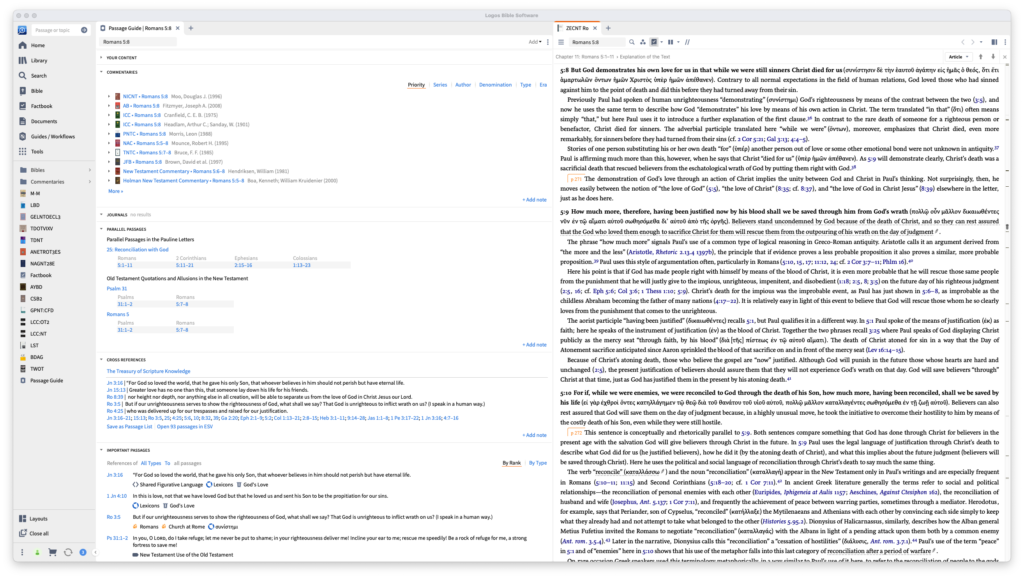
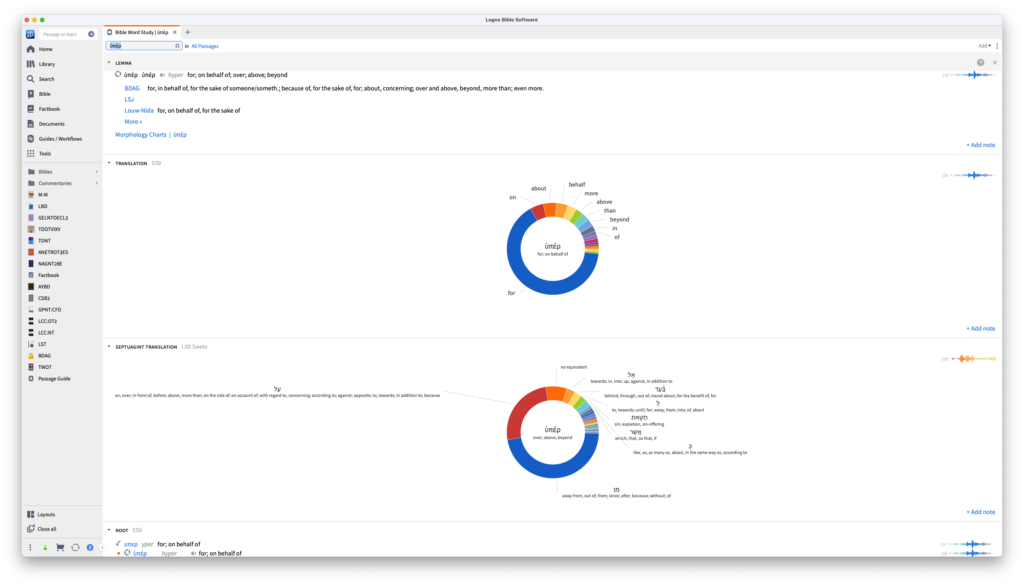
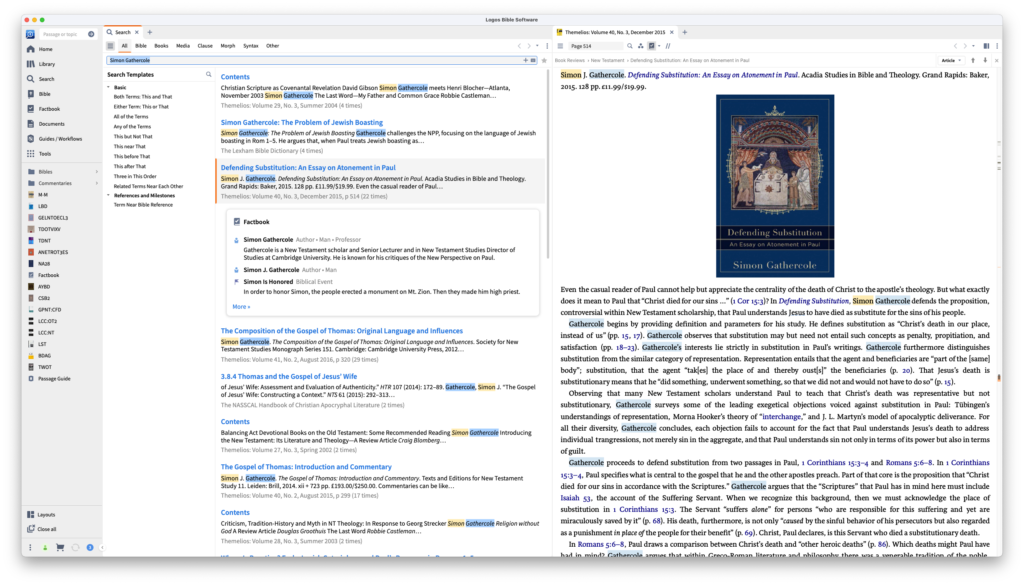
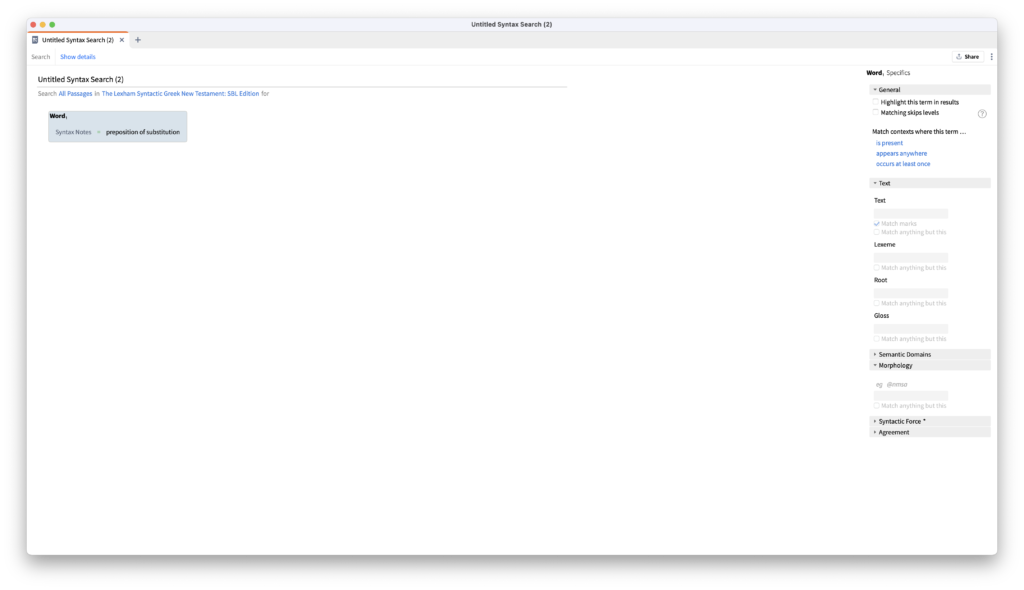
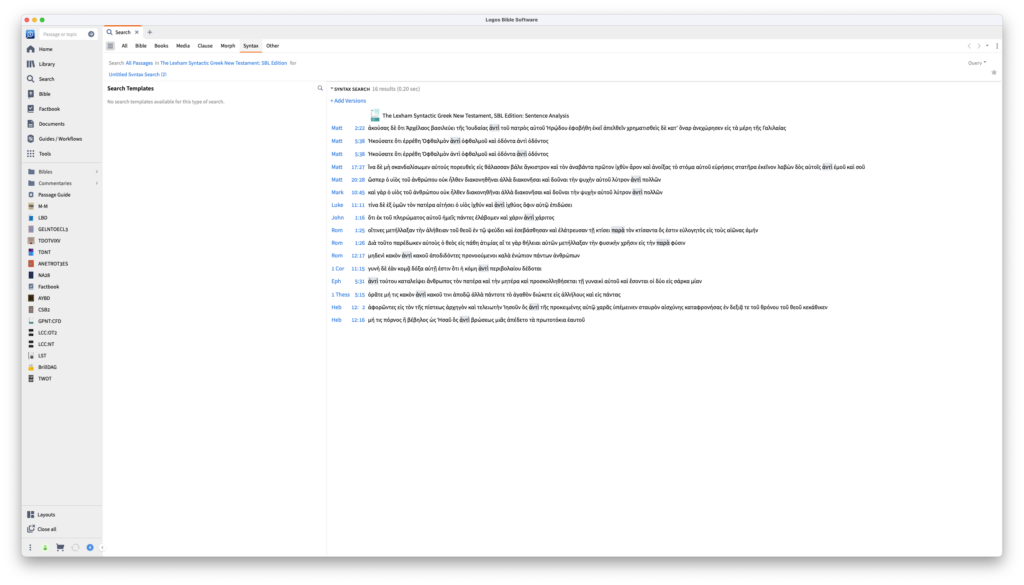
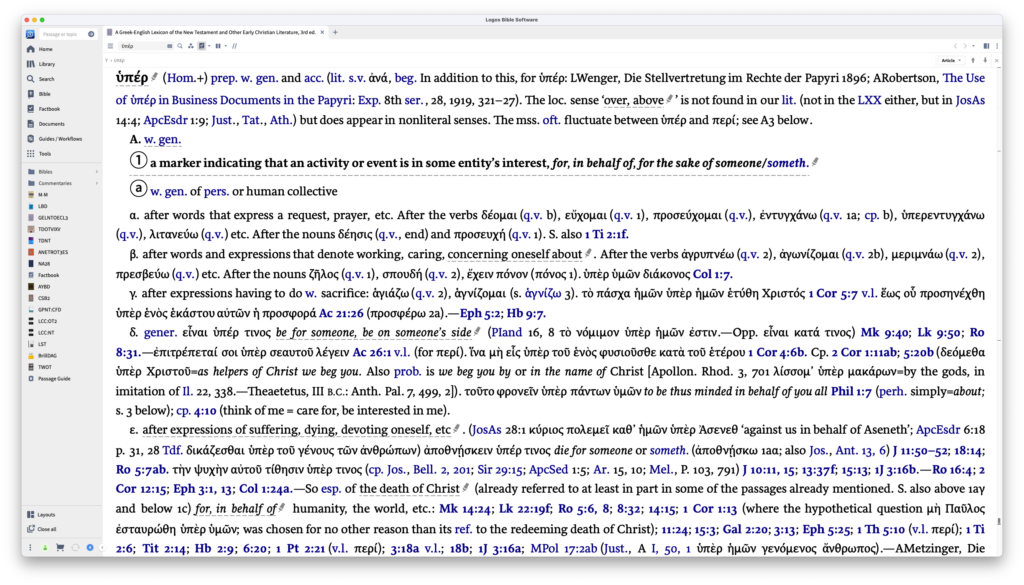
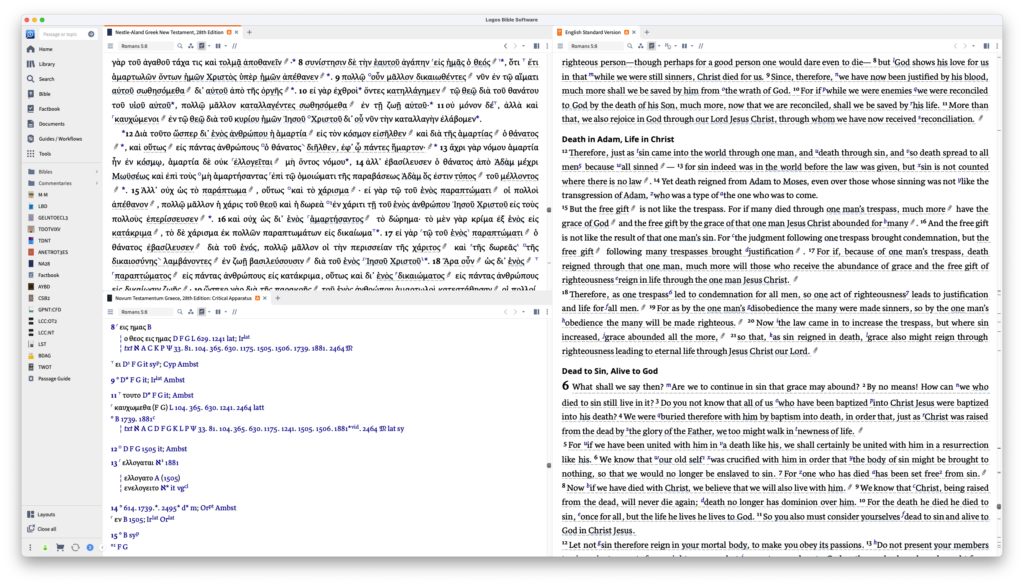
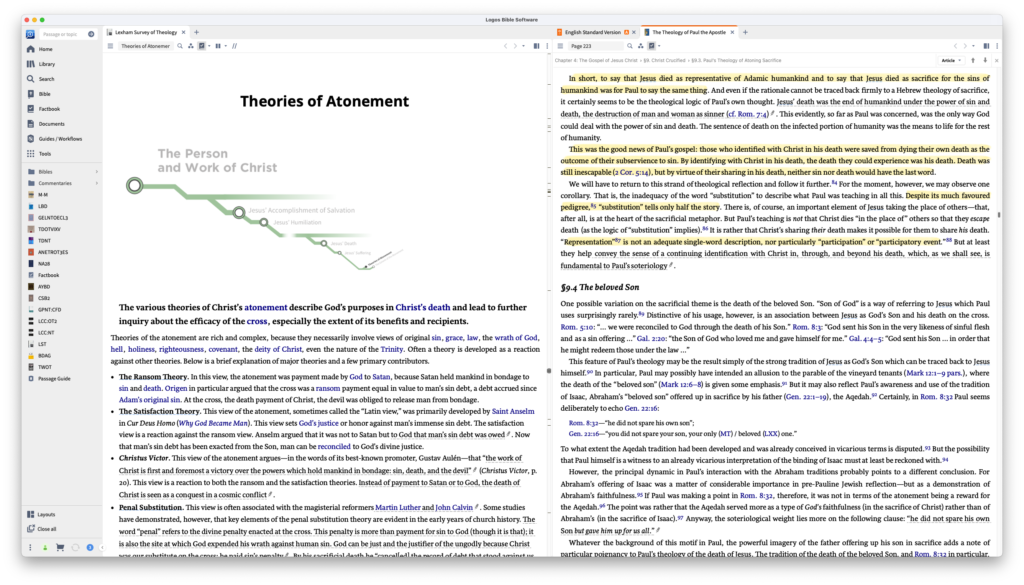
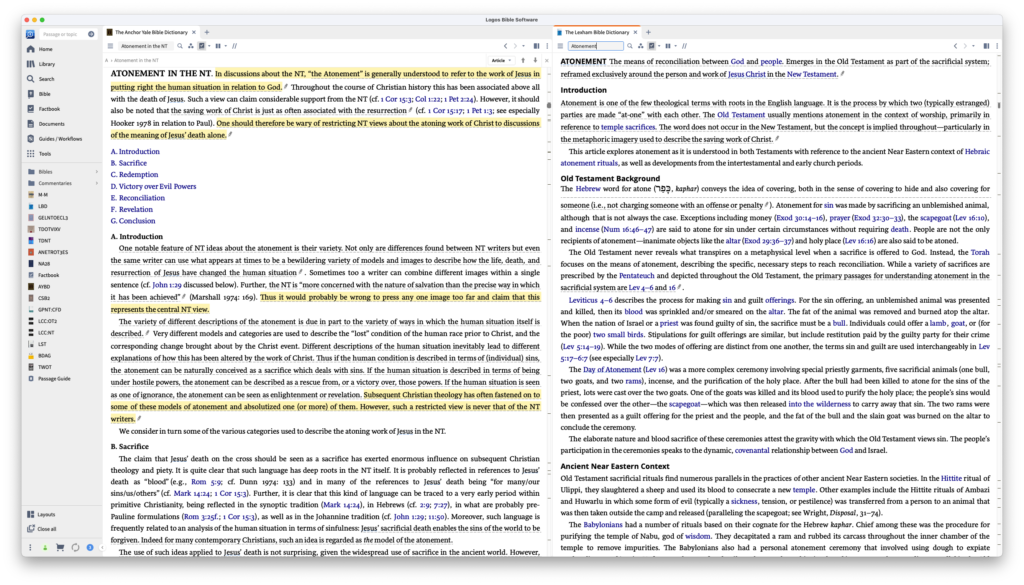
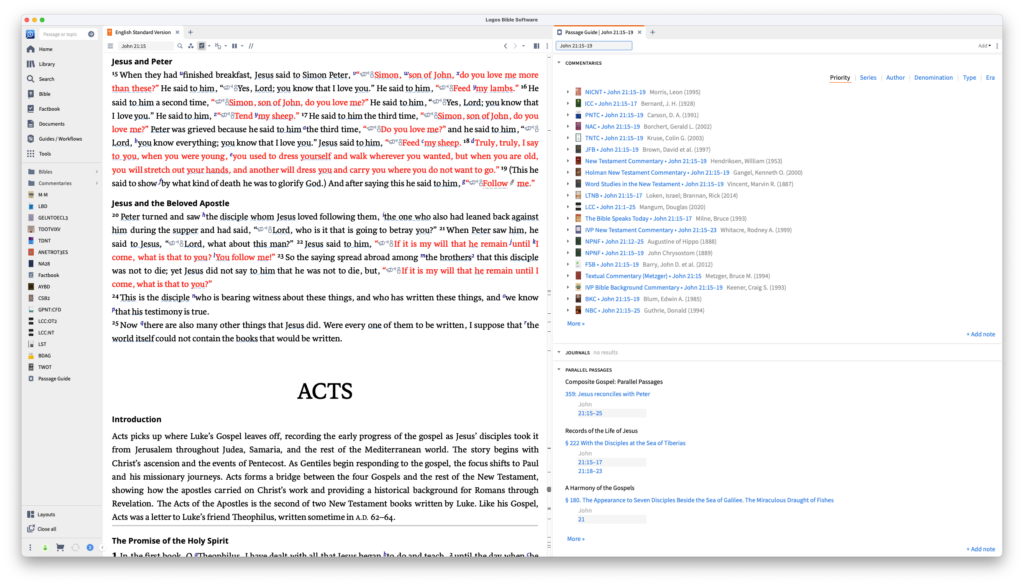
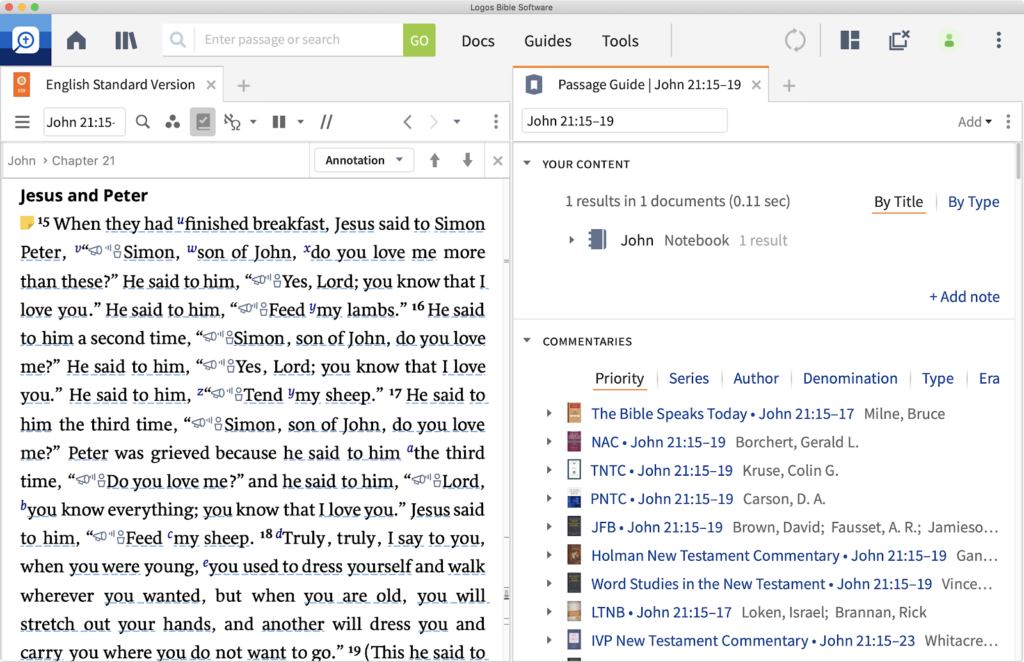
0 Comments